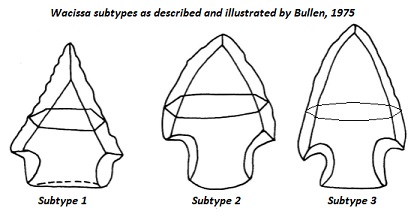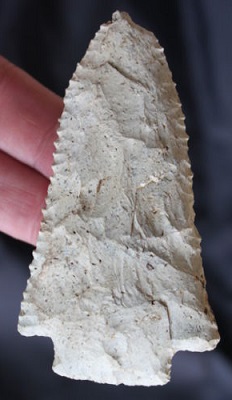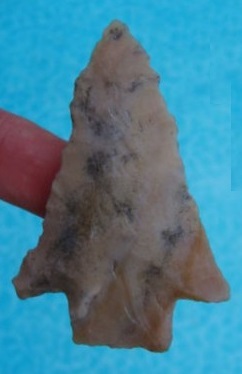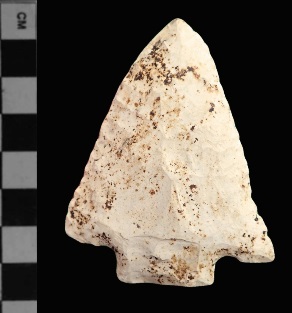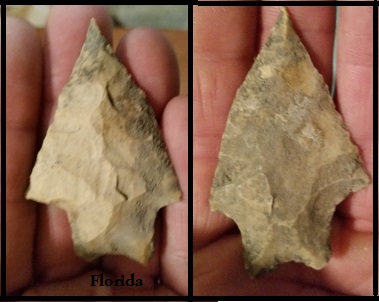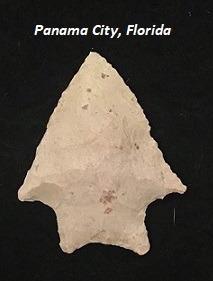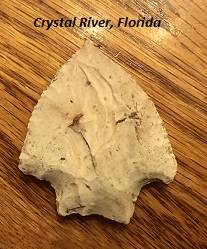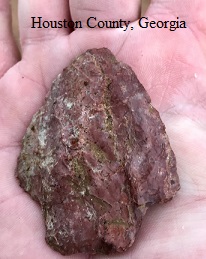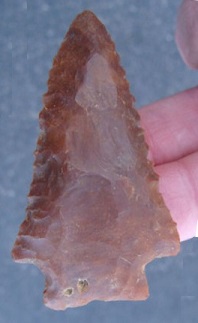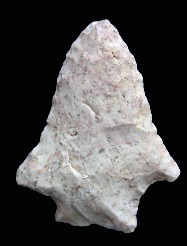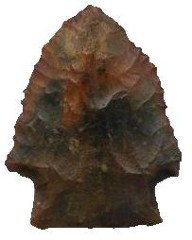Name Details:
Named By: Wilfred T, Neill
Named For: Wacissa River, Jefferson County, Florida
Date Identified: 1963
Type Site:
Wacissa
Cluster:
Date:
Cultural Period:
7,500 -6,500 B.P.
Early to Middle Archaic
Middle Holocene
Glacial Period:
Culture:
Outline is Representative of Common Size and Shape:
Description of Physical Characteristics and Flaking Pattern:
This is a thick small to
medium (1.5 to 3.5 inches) triangular stemmed point with a flattened to thin elliptical cross section. The blade ranges from excurvate to recurvate, curving in at the tip and flaring out at the shoulders.
The blade is beveled on all four edges and commonly serrated. The shoulders are usually barbed to horizontal, but become reduced as the point is re-sharpened. The stem is short and broad and primarily straight, but may
vary to slightly expanding or slightly contracting. The base is most notably slightly concave, but may vary to straight or slightly convex. This point is generally well made and has a random flaking pattern.
Size Measurements: Total Length - 35 to
85 mm (average 55 to 65 mm), Stem Length - 10 to 15 mm (1/3 to 1/6 the
total length of point), Blade Width - 32 to 65 mm, Stem Width - 20 to 35 mm (average 30
mm, typically greater than 1/2 the width of the blade), Thickness
- 8 to 12 mm
Distribution:
Distribution Comments:
This point is primarily found in central to northern Florida and into southern Georgia and southern Alabama.
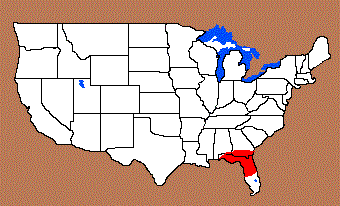
Additional Comments:
Benton Broad Stem is a similar point found in the Tennessee River Valley region (Granger and Granger, 2013).
Other points in this Cluster:
Point Validity: Valid Type
Neill was a herpetologist who
taught herpetology, ecology and archaeology at Pasco-Hernando Community College in Florida. He named this point in a professional publication and this type has many
professional references. This is considered a valid type.
.
Age Details:
References: (See Reference Page, Entry Number):
23, 30, 57, 58, 59, 167, W18
Wacissa Projectile Point, Wacissa Arrowhead
